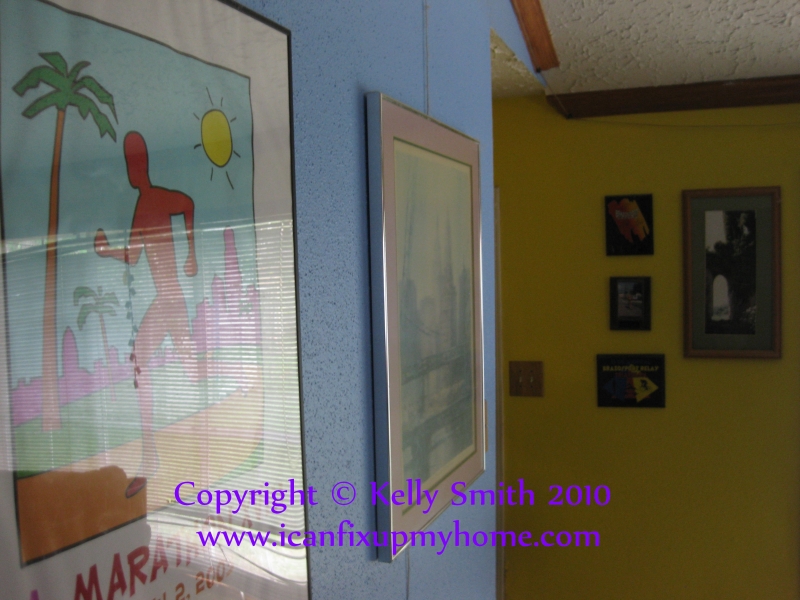Apply or Repair Orange Peel Texture
Also Called Eggshell or Splatter Texturing, Alternatives to Hopper and Compressor
© 2011 by Kelly Smith all rights reserved; content may not be copied, rewritten, or republished without author’s written permission. Author’s Google profile


Colorful walls with subdues orange peel texture.
This article was updated on 02/26/20.
This popular wall texture pattern is well-used by general contractors as well as subdivision developers. Why? Because it’s frugal and allows many houses to be processed by painting subcontractors lickety-split in a production fashion.
On the other hand, texture pattern techniques such as stomp or knockdown take extra steps and time devoted to manual labor. The tradeoff is that that they present a more interesting and custom look.
The initial step on a renovation is to repair your drywall holes, seams, or chipped corner bead. If you install any patches, and they are installed and the wall is taped and floated, then it’s the time to artfully match the existing texture that you have.
How you go about it varies; there are several ways to go about it. The exact method you chose is likely to be based on your personal choice combined with the extent of the repair you are performing. Whichever method you choose, it will behoove you to run your air conditioning system as this will remove the extra moisture from your home.
First, the Spray Can Texture Method
This approach involves using commercially produces spray cans of orange peel texture. Since patterns can vary widely, it is a good idea to practice on a scrap piece of drywall. Keep in mind that these cans are expensive at home improvement stores or even at Walmart.
For this reason it can be cost-prohibitive for larger wall or ceiling areas and the coverage stated on the can’s label should only be considered as a rough estimate. You know the drill, “Results are not typical”.
It helps to use wide painter’s tape to isolate your repair area in order to get professional looking results. Once the area has been sprayed and has dried, you can use some fine sandpaper or #000 steel wool to blend in the new with the old.
Using the Texture Hopper and Compressor Method
The hopper approach is a good choice for very large texture repair jobs and room additions. Both the hopper and air compressor may be rented from local tool rental outlets as well as home improvement stores like Home Depot or Lowes. But if you are on a tight budget, check out the Homax manual pump sprayer.
The texture material may be bought in a powder form and mixed before you apply it. You can also use thinned-out drywall compound (sheetrock mud). Keep in mind, it’s a good idea to spread out sheet plastic to protect protect your floor. In addition, hang it in open doorways.
An alternative, the Paint Roller Texture Repair Method
If you are doing one large area with no matching, this approach will save you some money. For this method, the following tools and materials are required:
- Drywall compound (sheetrock mud)
- A Paint pan
- Paint roller (with extension pole) with 3/8” nap
- Fine sandpaper
You can be creative with paint roller texture. It’s extremely versatile in finished appearance. First, thin out a bucket of drywall compound with water. This way it will be easy to work with.
For very small jobs, this can be done right in your paint pan. Next, use a scrap piece of drywall to practice with. Roll some compound out in all directions; up, down, and angled in overlapping strokes.
Remember that your roller knap will leave ridges on the “beads” or raised areas. This is fine; the important thing is to get the diameter of the beads as you like them and consistent. After the compound has dried, lightly sand the surface to round out the raised area to match.
You can also vary and take the peaks off with a wide drywall finishing floating knife. Full instructions are in the first Recommended article below. Finally, prime and paint the wall. Ready to try applying or repairing your orange peel texture?
